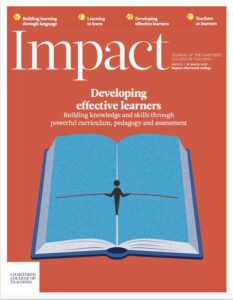Can physics and chemistry individual education plans (IEPs) improve students’ skills?

Inclusive education has been a particular focus of the education system in Serbia since the 2009 Law on Foundations of the Education System (SIPRU and UNICEF, 2014), which introduced individual education plans (IEP) as a way to individualise the curriculum for each student. This implied that students with special educational needs and disabilities (SEND) should be supported according to their learning needs within mainstream schools, rather than being taught a restricted curriculum within special schools. As a physics and chemistry teacher, I have always believed that science provides a range of opportunities to engage SEND students, from walks to observe the environment to demonstrations and hands-on experiments in the classroom. However, it also presents challenges, and the introduction of IEPs raised questions around the implementation and assessment of inclusive education in science.
The development of inclusive education in Serbia
While the inclusive model of education has been adopted by almost all European countries, the question of how to apply inclusionAn approach where a school aims to ensure that all children remains important. This raises various related questions, such as:
- How can teachers be provided with basic training so that inclusion can work?
- Which methods should be applied to assure children’s progress in mainstream classes?
- How can teachers ensure the conditions in this environment?
- How can teachers ensure that the teaching process does not lose its quality for the other students?
- How much will it all cost?
In Serbia, these issues around the inclusive process present obstacles within a system that is still developing. The traditional model of SEND education in Serbia involved grouping children who shared similar characteristics and applying specially designed educational programmes and teaching methods. The opening of special schools centred around a medical model. Children were separated from families and placed in institutions, and a parallel educational system developed, with mainstream and special schools functioning separately for many years (Jablan and Kovačević, 2008). Special schools often employed ‘defectologists’, researchers who study the development of ‘abnormal’ children, rather than teaching staff.
In the mid-20th century, the inclusion movement challenged this treatment of SEND children and argued for children with SEND to be taught in mainstream schools. This was facilitated by the 2009 Law on Foundations of the Education System, which stipulated that schools should identify the needs and abilities of each individual student. This involved three types of IEP: IEP 1 was an adapted work programme for students with mild disability using the standard curriculum; IEP 2 was a modified work programme, based on the curriculum but including some changes according to the ability of the student; and IEP 3 was the enhanced and expanded programme for talented children, intended for students with above-average achievement in education.
IEPs in the classroom
Distinguishing these different types of IEP provided a means for SEND students to receive the support they needed while accessing the same fundamental curriculum as all students. Parents now make the decision about which school their children are enrolled in, and they are seen as partners in the process of implementing IEPs. Using IEPs has also encouraged the development of a more nuanced understanding of SEND. Instead of ‘special needs’ being defined narrowly as developmental handicaps, the education system has moved towards a more comprehensive understanding of the phrase, which includes children who may need support as a result of social, cultural and economic living conditions, including those with behavioural difficulties, children without parental care, abused children, children of refugees and children from socially deprived environments. There is more of an understanding that the needs of children from marginalised groups are essentially the same as those of other children, but that they may need a different level of educational support (UNESCO, , International Bureau of Education , 2007).
The introduction of IEPs was difficult at first, because there was no consensus on how to assess achievement of Type 1 and 2 IEPs. How to assess attainment within an IEP remains unclear, and the impact of IEPs on the further education of SEND children is also still not clear (Petković, 2015). When comparing the situation and the problem of inclusion in Serbia, there are similarities to other European countries (European Agency for Special Needs and Inclusive Education (EASNIE) , 2017). Research shows that there is an inadequacy in teachers’ education and a lack of knowledge of the characteristics of SEND children because there is little collaboration or knowledge exchange between academic institutions and schools.
The introduction of IEPs has enabled SEND students to be taught in mainstream schools and to participate in joint activities, and this is important in terms of supporting their learning as well as addressing the social exclusion and isolation of SEND children. The curriculum might be the same, but approaches to teaching should be developed and specialised for each child individually. The use of the IEP is just a small step that has been taken towards achieving these goals.










